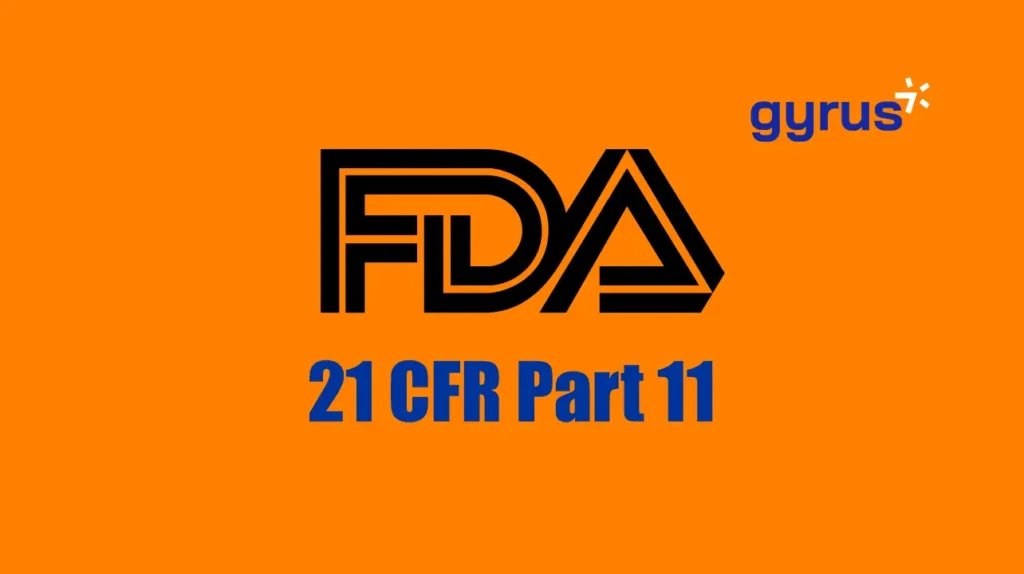As the scope of real-time training through an LMS is continuously on the rise, the demand for compliance training is also increasing, especially in the life science and pharmaceutical industries.
The very fact that regulation-compliant learning management systems deliver trustworthy training (ie, matching the quality and safety standards of the regulatory bodies) is motivating food and pharmaceutical companies to look for learning systems that comply with HIPAA and 21 CFR Part 11 regulations.
What Is 21 CFR Part 11 Regulation?
21 CFR Part 11 regulation is governed by the U.S. Food & Drug Administration (FDA) and is known to set the standard or terms by which electronic signatures and electronic records are deemed to be safe, reliable, and comparable to physical records.
The regulation requires that the LMS comply with stringent federal and international regulations with secure audit-trail verification and employee training records.
This means that if the LMS used for training complies with 21 CFR Part 11 regulation, the electronic records, and signatures will be treated as trustworthy and acceptable in place of handwritten signatures, paper records, or any other physical records.
If the electronic signature capability is key for your business or organization, make sure you choose an LMS that can be easily configured in a manner to meet the requirements of Part 11.
How Learning Management Systems for 21 CFR Part 11 Regulations Offer Effective Training
To comply with 21 CFR Part 11 regulation, the eLearning software must have the right storage of activities and secure management of all the registered information. This is necessary to create a validated LMS that is safe, compliant, and conforms to the FDA standards.
Apart from this, there are several features in a regulation-compliant LMS, which make it highly effective for training. Some of them are mentioned below –
1. User Authentication and Data Access
A compliant LMS offers sturdy user authentication through the automatic expiry of passwords, the creation of strong usernames and passwords, and the adoption of verified password recovery processes. While using such an LMS, you must keep in mind that one user ID applies to only one person and that the user account must not be shared with anyone else.
An API authentication feature should be enabled for the SSO (Single Sign-On) process. Although a compliant LMS provides a strong and secure data access structure, you must ascertain if it allows valid data entry. Properly configured, these learning management systems ensure that the records are accessed, electronically signed, or altered by only authorized individuals.
2. Control and Tracking of Different Versions of Courses
During an audit, many organizations have access to only their current courses for review. However, it may be the case that trainees/employees have completed a previous version of the course but not the current one. A compliant learning management system tracks all the versions of the course automatically. With this feature, if during an audit, you are asked to present actual training achieved by employees, you can use the online transcripts to show the exact version of the course that was completed by the employees.
3. Integration
Offering compliance-related functionality, an LMS helps healthcare and other organizations to –
- Respond to opportunities and challenges quickly and efficiently.
- Streamline assignment of all regulatory and job-specific training
- Create better audit trails
- Align learning and compliance training to business processes
Organizations often need to maintain other business management software to meet their complex needs and requirements. These organizations need to be able to integrate these complementary systems with their LMS to form a perfect online compliance scheme, and a well-developed LMS should carry this capability.
4. Report Generation
A compliant LMS generates accurate copies of reports for inspection purposes. These reports should be available in both print and electronic format – CSV, HTML, Excel, and PDF. Based on specific search parameters, these reports should also be customizable. This feature allows organizations to be inspection-ready and limit the amount of data presented to the Food & Drug Administration during an audit.
5. Electronic Signature
Before any change operation takes place in the platform, an electronic signature is a must. This feature asks for the primary reason for updating the information, along with the user ID and its password. This assures that you have complete control over your learning management system and that you can track all the activities performed in the LMS.
With these features, cloud-based LMS software becomes the ideal platform for effective training in a regulatory environment.









